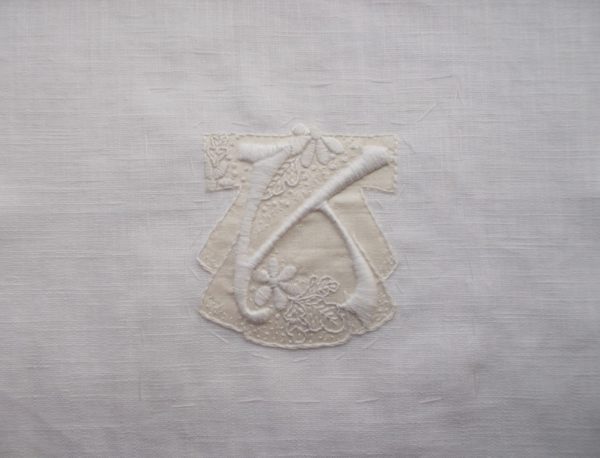
A whitework alphabet: letter K (hand embroidered by Mary Addison)
In Yorkshire for a family memorial service, this week has seen more knitting than sewing but here is an embroidered K that I just about managed to finish before leaving home. (If you look hard, you might make out long loose stitches tacking the linen to the stabilising backing. These will be undone when I get home when I’ll also surround the design with an outline square of back stitch.)
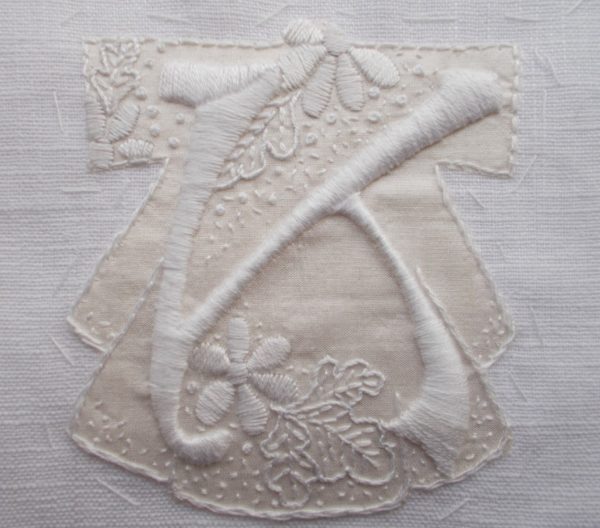
A whitework alphabet: letter K (hand embroidered by Mary Addison)
Kimonos are interesting garments and, rather like saris, were made from the whole of a bolt of fabric (36 cm by 11m) with no waste. Traditionally kimonos are made from seven pieces. Two extend from the front hem, up over the shoulder to the back hem, the sleeves are cut from two further pieces and and another pair form the side panels. The final piece, much narrower than the others forms the neckband which continues down both front pieces to finish the garment off.
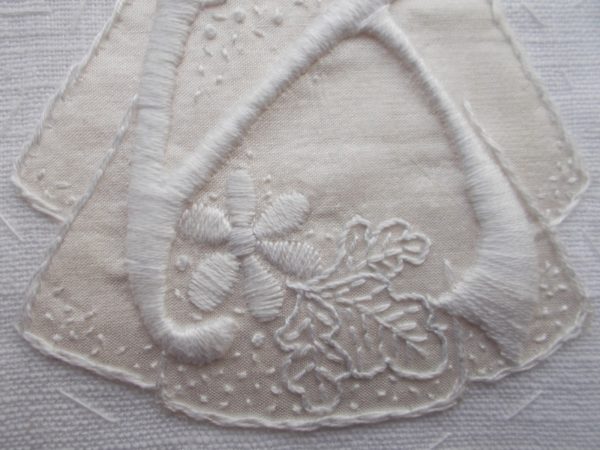
Detail: whitework alphabet: letter K (hand embroidered by Mary Addison)
Japanese embroidery has its own long history, having developed in an unbroken tradition over at least 1,000 years. Read The Tale of Gengi for brilliant descriptions of kimonos which differ little from the garments we know today, except that wearing one garment at a time was never enough. Status could be read in glimpsed layers of sleeves draped over the edge of a carriage while the rest of the woman remained hidden inside! Snippets of embroidery visible on neckbands crossing the throat tantalised for beauty of both fabric and body beneath. Shizuka Kusano’s The Fine Art of Kimono Embroidery is a wonderful book for learning more about the art and craft of Japanese embroidery and the many pages of excellent photographs are a real joy to study.
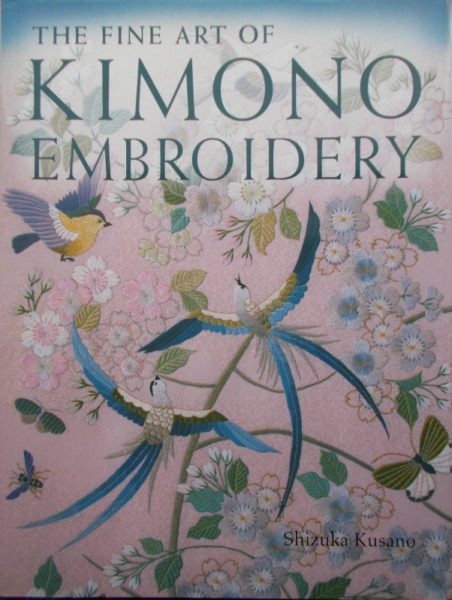
Shizuka Kusano: The Fine Art of Kimono Embroidery
Embroidered kimonos exhibit both flat and twisted silk threads as well as metallic threads. Embroiderers were particularly fond of flat stitch in untwisted silk (satin stitch) which gave flowers’s petals a soft smooth sheen. See the V & A’s website for more details about making a kimono.
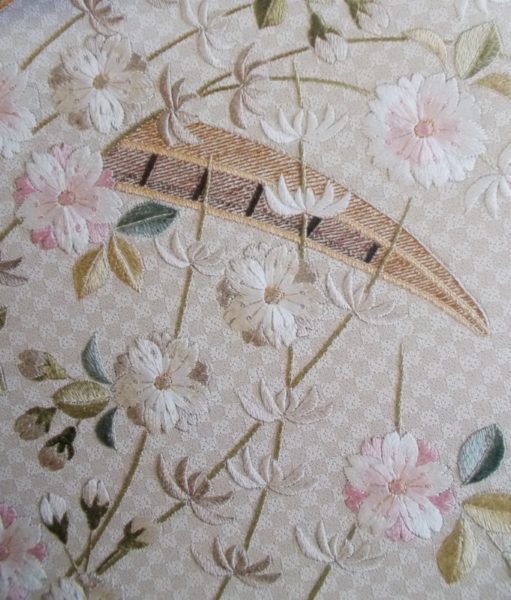
Detail of embroidery from Shizuka Kusano’s The Fine Art of Kimono Embroidery
I blogged last week’s embroidered J for Jug in such a hurry that it was only later that I realised how crumpled the fabric was. I’ve now ironed the embroidery and replaced the photographs with the newly ironed versions. Goodness, standards are slipping!

4 Comments
I remember reading about how an 18th C visitor said huffily that the kimono “had something of the undressed look of a dressing gown” and that the author commented that said visitor certainly hadn’t been paying attention, given the number of layers that would have been involved!
I like your “K” – it’s settled very nicely on the kimono shape.
And, of course if you’re lovely and slim the kimono shape does lend itself very well to being a dressing gown.
My brother worked in Japan for a few years and brought back several thin, unlined cotton kimono style robes called yukata which we are still using – they are especially easy to pack into a suitcase.
We would never notice the fabric around such beautiful embroidery being wrinkled. I had no idea that the kimonos were worn in layers like that. Fascinating.
Well Amara, that’s kind of you to say you’d never have noticed.
‘The Tale of Genji’ is not only full of such interesting sartorial details, it’s also a terrific novel about the C11th Japanese court written by Murasaki Shikibu, a lady in waiting to the empress of the court. It’s probably my favourite book.